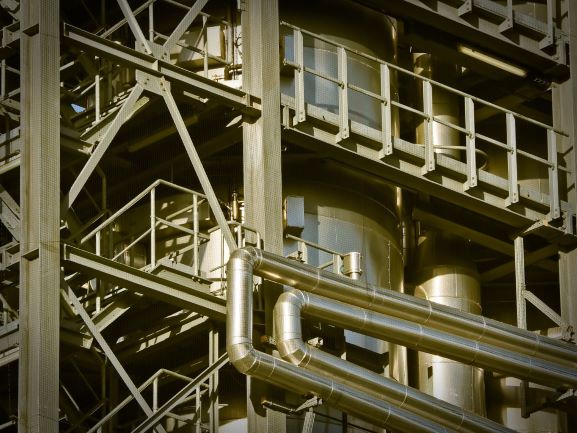Linear position sensors are essential in a variety of industries. These are the applications for linear position sensors in factory automation.
Industrial automation equipment involves hardware with many moving parts. It is vital to make sure all these moving parts are working together, so measurements and data are collected from every element, and position sensors are the devices that collect the data. In factory automation equipment, linear position sensors determine the position or straight line movement of a machine component or workpiece.
In this blog, we'll cover the common types of linear position sensors and what they offer for factory automation applications. An overview of the major characteristics of commonly used analog output linear position sensors identified by their underlying technology is shown in the comparison table below.
LVDT and LVIT sensors both use electromagnetic (inductive) technology to sense the linear position of a movable rod. Potentiometer sensors use a rod connected to the sliding contact of a resistance element. Magnetostrictive sensors use a magnet moving along a small tube with a mechanical waveguide inside. Regardless of the underlying technology for a linear position sensor, there are certain characteristics needed for factory automation applications that are reflected in this table. Besides the obvious ones like measuring range and installed cost, in no particular order they are:
Industrial automation equipment involves hardware with many moving parts. It is vital to make sure all these moving parts are working together, so measurements and data are collected from every element, and position sensors are the devices that collect the data. In factory automation equipment, linear position sensors determine the position or straight line movement of a machine component or workpiece.
In this blog, we'll cover the common types of linear position sensors and what they offer for factory automation applications. An overview of the major characteristics of commonly used analog output linear position sensors identified by their underlying technology is shown in the comparison table below.
LVDT and LVIT sensors both use electromagnetic (inductive) technology to sense the linear position of a movable rod. Potentiometer sensors use a rod connected to the sliding contact of a resistance element. Magnetostrictive sensors use a magnet moving along a small tube with a mechanical waveguide inside. Regardless of the underlying technology for a linear position sensor, there are certain characteristics needed for factory automation applications that are reflected in this table. Besides the obvious ones like measuring range and installed cost, in no particular order they are:
- Resolution – ability to sense very small changes in position input
- Repeatability - the ability to produce the exact same output for the same input
- Environmental robustness - producing accurate results regardless of ambient temperature, vibrations, and shocks
- Reliability and service life – continued operation for a reasonable period of time
- Measurement precision – reflected by good non-linearity and dynamic response
All these features must be weighed in choosing the right linear position for any given factory automation application. Often the technical characteristics must be compared to cost issues.
To help in choosing the linear position sensor, here are some tips and recommendations:
To help in choosing the linear position sensor, here are some tips and recommendations:
- For position measurement of a hydraulic actuator, LVITs or magnetostrictive sensors are commonly used, especially for feedback on hydraulic presses and press brakes.
- For part dimensional gaging, either on a machine or in a QA lab, spring-loaded LVITs or LVDTs are readily available, but LVITs have a substantial edge in installed cost.
- For operation in high ambient temperature environments, LVDTs with remote signal conditioners are generally the best choice.
- For the lowest installed cost, LVITs and linear potentiometers are the usual choice, but LVITs have much better reliability and greater flexibility in heavy-duty packages.
- For short-range measurements, LVITs and LVDTs are used, with a cost edge to LVITs
Properly chosen linear position sensors are vital to factory automation because, without the data collected from them, manufacturing process issues could go unnoticed, and production could be interrupted or product quality could be compromised. If you want to better understand what advantages various linear position sensors offer, then contact us! We will be happy to provide more information and answer any of your questions.
Ready to order or interested in more information?
Additional pricing or technical questions?

_0.png)
Categories
Page Categories
